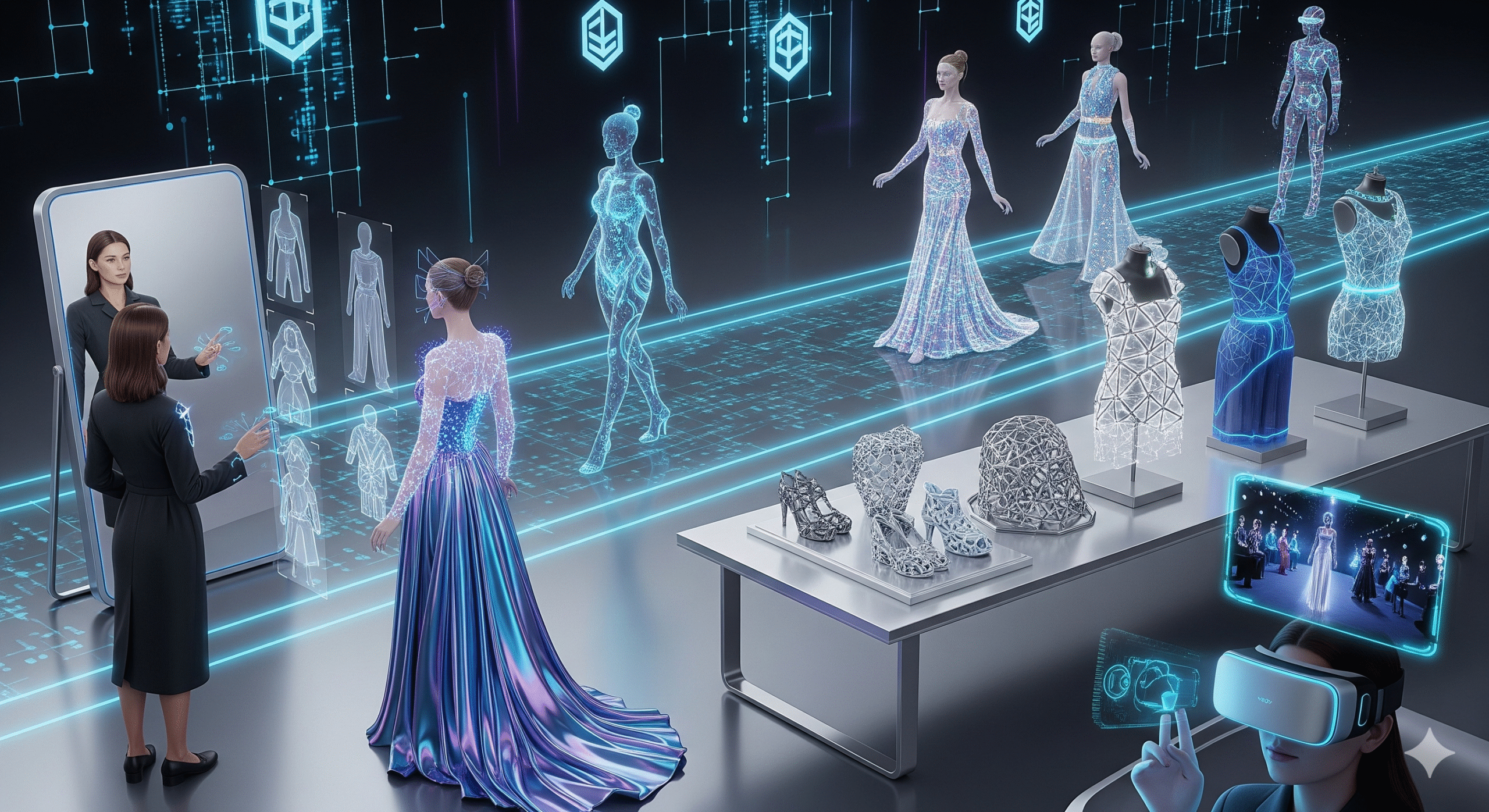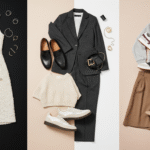Introduction
The fashion industry has changed to include technology in addition to fabrics, colors, and styles. Keeping up to date is now important for brands as fashion tech advancements radically alter how they create, market, sell, and design clothing. Virtual try-ons and AI-driven designs are just two examples of how skill is enabling more intelligent, eco-friendly, and modified fashion knowledge.
This discourse unveils the pivotal fashion tech advances every brand must acknowledge in 2025—offering a compass for evolution in a digital-first market that refuses to stand still.
1. Artificial Intelligence in Fashion Design

Artificial Intelligence has emerged as a troublesome artisan in the atelier. Algorithms now divine approaching trends, decode consumer instincts, and conjure entire clothes.
· AI-empowered forecasting: Retail titans such as H&M and Zara already harness AI to forecast market appetite and craft lucrative outlines.
· Generative design tools: Designers feed mood boards into AI engines and receive original sartorial blueprints.
Why it matters: AI trims disorganization, accelerates design cadence, and matches collections with authentic customer cravings.
2. Augmented Reality (AR) Shopping
AR is breathing life into online trade, enabling customers to simulate clothes, footwear, or jewelry upon their very forms.
· Virtual fitting rooms: Smartphones become mirrors of fancy, dressing clients in real-time.
· Cosmetic & accessory apps: Sephora and Gucci demonstrate AR mastery, letting users preview styles before a purchase.
Why it matters: By inspiring confidence and limiting costly returns, AR reinforces digital shopping’s honesty.
3. Virtual Reality (VR) Fashion Shows
VR ushers in runway spectacles without physical chains. Houses like Balenciaga and Dolce & Gabbana are unveiling entire collections within immersive metaverse realms.
· Metaverse showcases: Spectators attend shows from the privacy of their living rooms.
· Virtual boutiques: Platforms such as Decentral host avant-garde fashion emporiums.
Why it matters: VR widens global reach and reduces the heavy expenditures of physical catwalks.
4. 3D Printing in Fashion
3D printing introduces skill with minimal wastage and infinite personalization. Designers mold innovative textiles and craft limited runs with supreme efficiency.
· Customized sneakers & adornments: Adidas and Nike fabricate featherlight, enduring footwear with 3D precision.
· Eco-conscious materials: Recyclable filaments and green printing herald a lower-impact future.
Why it matters: It ushers in on-demand couture and a deeply personal consumer journey.
5. Smart Fabrics & Wearables
Cloth is evolving into circuitry—garments that breathe, sense, and adapt.
· Climate-responsive textiles: Outfits that morph with shifting weather.
· Wellness wearables: Attire entrenched with sensors to monitor hydration, posture, or heartbeat.
Why it matters: Smart fabrics marry aesthetic with utility, making fresh avenues for health-driven clientele.
6. Blockchain and Digital Fashion
Blockchain casts light on opaque supply chains while invigorating authenticity.
· NFT wardrobes: Digital attire exclusively crafted for avatars in metaverse ecosystems.
· Traceability networks: Shoppers track clothes from loom to wardrobe with immutable ledgers.
Why it matters: Beyond slide, blockchain unlocks digital apparel as an developing revenue artery.
7. Sustainable Fashion Tech
Sustainability has metamorphosed from rhetoric to obligation. Technology now pioneers environmentally respectful production.
· AI-guided inventory: Predictive systems curb textile excess.
· Waterless dyeing: Processes slash water dependence in coloring fabrics.
· Recycling ingenuity: Old attire reborn as new through cutting-edge upcycling.
Why it matters: As consumers demand ecological accountability, tech delivers the mandate.
8. E-Commerce Personalization

Machine learning tailors shopping with surgical precision.
· AI stylists: Virtual advisors offer around-the-clock fashion counsel.
· Bespoke feeds: Digital storefronts curate apparel to echo personal style signatures.
Why it matters: Personalization not only boosts conversions but also forges enduring loyalty.
9. Robotics in Fashion Manufacturing
Automation now stitches, cuts, and inspects with relentless exactitude.
Why it matters: Robotics minimizes human error, shrinks costs, and scales production at unprecedented velocity.
10. Digital Fashion Marketing
Marketing itself dons a technological veil. Brands invest in AI-fueled campaigns and artificial influencers.
· Virtual muses: Avatars like Lil Miquela champion labels across global stages.
· Precision ad targeting: AI ensures messages resonate with the right audience at the right moment.
Why it matters: Digital-first marketing enlarges reach, amplifies engagement, and heightens return on investment.
Conclusion

The lexicon of fashion is being rewritten by technology. Those who weave novelty into their fabric will endure; those who resist may fade. From algorithmic design and immersive retail to environmentally responsible production, these progressions are not distant mirages but present realities.


